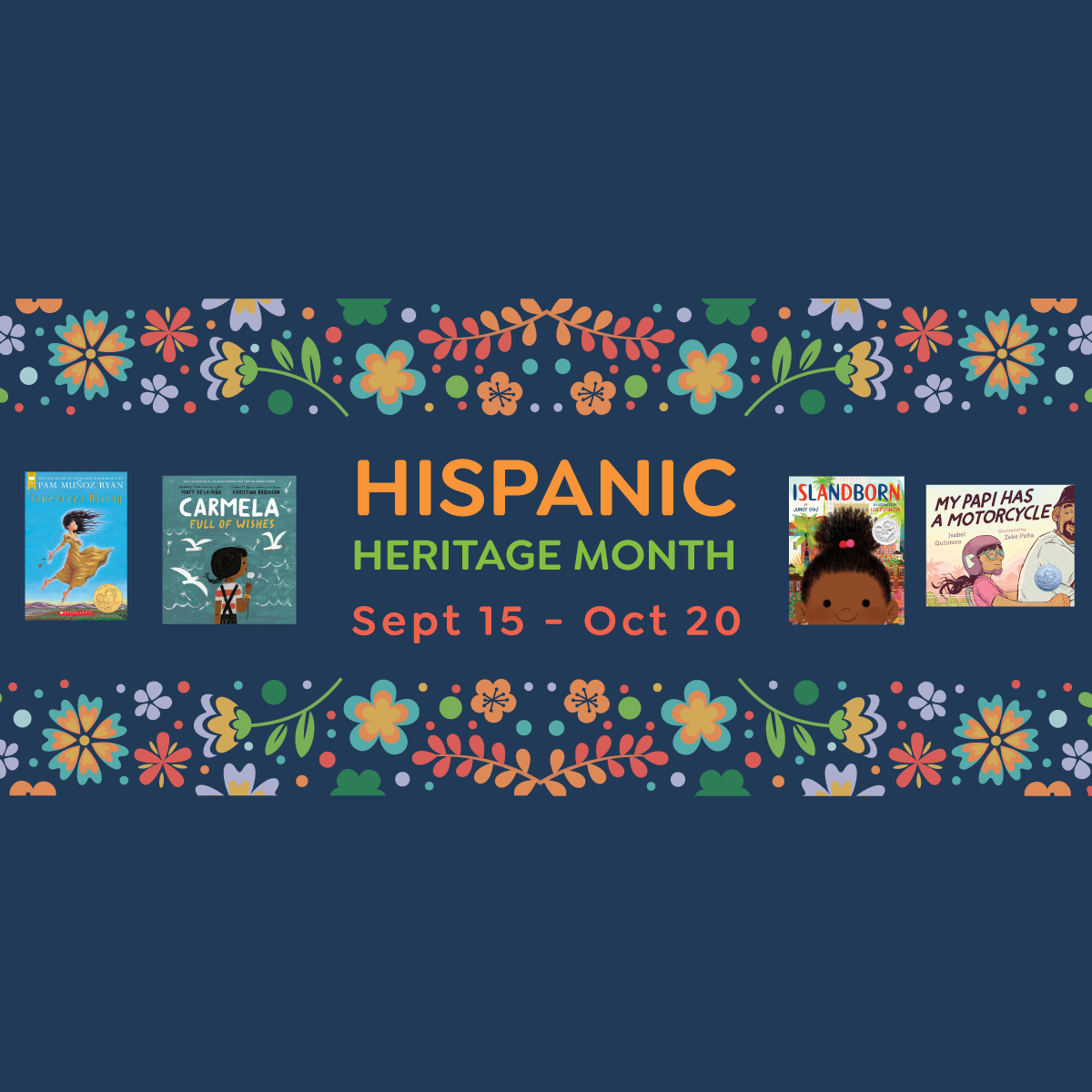Hispanic Heritage Month is a perfect opportunity for educators to introduce students to the rich cultural traditions, diverse histories, and significant contributions of Hispanic people. One of the best ways to do this is through literature that opens young minds to new perspectives. Here are seven recommended children’s books by Hispanic authors that are sure to inspire empathy, understanding, and a deeper appreciation of Hispanic heritage in your classroom.
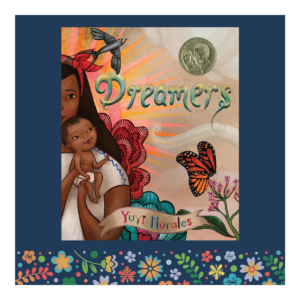 1. Dreamers by Yuyi Morales
1. Dreamers by Yuyi Morales
This beautifully illustrated book tells the story of a mother and her child who immigrate to the United States. Through challenges and discovery, they find strength in their dreams and the power of libraries. Dreamers is a touching narrative that highlights the immigrant experience, fostering empathy in students. It helps them understand the importance of resilience and the joy of finding a place in a new world.
Yuyi Morales is a Mexican American author and illustrator who immigrated to the U.S. in 1994 and learned English by reading in libraries with her infant son. Her own journey deeply shapes the narrative of Dreamers, as she draws from her Mexican heritage and personal migration experience to bring authenticity and heart to the story.
What can I do?: Use this book to discuss the concept of the American Dream, the role of community resources such as libraries, and to inspire students to create their own “dreamer” stories.
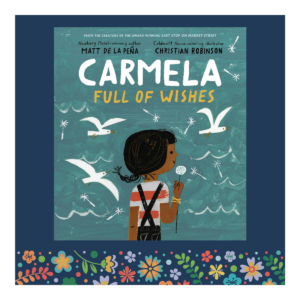 2. Carmela Full of Wishes by Matt de la Peña, illustrations by Christian Robinson
2. Carmela Full of Wishes by Matt de la Peña, illustrations by Christian Robinson
Carmela Full of Wishes is a tender look at the hopes and dreams of a child in a working-class Hispanic family. When Carmela wakes up on her birthday, she’s finally old enough to join her big brother on errands; outside the laundromat she finds a lone dandelion and learns to make a wish. The book provides insight into the everyday lives of Hispanic families, promoting understanding and empathy. It captures the innocence of childhood while subtly addressing socio-economic issues.
Matt de la Peña is an American author of Mexican descent whose father’s immigration and his own experiences growing up in a border community inform much of his work. He often weaves themes of identity, class, and the Hispanic experience into his stories. Christian Robinson, the illustrator of Carmela Full of Wishes, grew up in Los Angeles in housing shared with extended family and often draws from memories of community and belonging to inform his art.
What can I do?: Encourage students to discuss their own wishes and dreams. Pair the book with a writing activity where students can write about a day in their lives, highlighting the things they are grateful for.
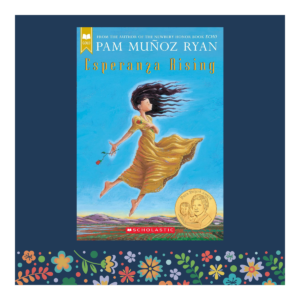 3. Esperanza Rising by Pam Muñoz Ryan
3. Esperanza Rising by Pam Muñoz Ryan
This novel follows Esperanza, a young girl from a wealthy Mexican family, whose life changes drastically when she and her mother must flee to California and work as laborers during the Great Depression. Esperanza Rising is a powerful story about resilience, identity, and the migrant experience. It’s a great way to introduce students to the history of Hispanic laborers in the United States.
Pam Muñoz Ryan, whose heritage includes Mexican roots, frequently writes about bicultural identity, migration, and the lives of Hispanic and Mexican American communities. Her deep respect for Mexican traditions and her attention to historical detail bring richness to her storytelling, including in Esperanza Rising.
What can I do?: Use the book to explore themes of social justice, family, and change. Students can engage in discussions about the historical context and even research the life of migrant workers today.
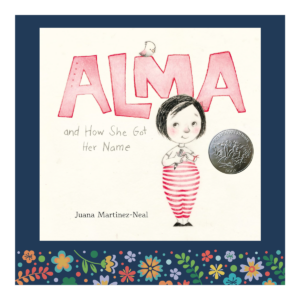 4. Alma and How She Got Her Name by Juana Martinez-Neal
4. Alma and How She Got Her Name by Juana Martinez-Neal
Alma feels her name is too long until she learns the story behind each part of it, discovering her connection to family and heritage. This story is a beautiful exploration of identity and the significance of names, encouraging students to appreciate their backgrounds and family histories.
Juana Martinez-Neal is a Peruvian American author-illustrator who was born and raised in Lima and comes from a family of painters. Her Peruvian roots, multilingual environment, and family art legacy inform her tender, visual storytelling, especially in the way she handles names, memory, and heritage in this very personal story.
What can I do?: Invite students to share the stories behind their names or create family trees. This can lead to deeper conversations about heritage, culture, and the importance of family connections.
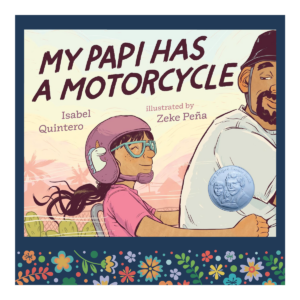 5. My Papi Has a Motorcycle by Isabel Quintero, illustrations by Zeke Peña
5. My Papi Has a Motorcycle by Isabel Quintero, illustrations by Zeke Peña
Celebrate the vibrancy of a Hispanic community along with Daisy Ramona as she rides through her beloved neighborhood with her father. The book celebrates the bond between father and daughter while highlighting the warmth and cultural richness of Hispanic neighborhoods.
Isabel Quintero is an American writer of Mexican descent whose work often centers on Hispanic and Latino identity, bilingual life, and community-based stories. Her roots in Southern California and her experience growing up around Latino neighborhoods contribute to the authenticity in My Papi Has a Motorcycle. Zeke Peña is a Chicano artist whose visual style draws on street art, mural traditions, and community aesthetics, helping bring neighborhoods to life in a way that resonates with Latino cultural sensibilities.
What can I do?: This is a great opportunity to discuss the concept of community and belonging. Students can create their neighborhood maps or write stories about their favorite places in their communities and the people they share are them with.
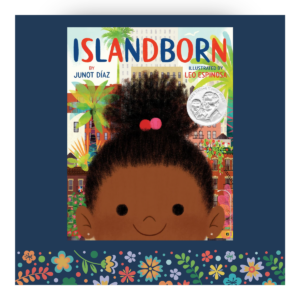 6. Islandborn by Junot Díaz, illustrations by Leo Espinosa
6. Islandborn by Junot Díaz, illustrations by Leo Espinosa
Lola, a young girl, is asked to draw a picture of the country she left as a baby. She can’t remember, but with the help of her family and neighbors, she pieces together a vivid picture of her heritage. Islandborn addresses themes of identity, memory, and the immigrant experience in a way that’s accessible to children. It emphasizes the importance of cultural roots and community.
Junot Díaz is a Dominican American Pulitzer Prize winner whose works often center on Dominican identity, diaspora, and bilingual life. His cultural background deeply influences Islandborn, where memory and storytelling across generations are central. The illustrator, Leo Espinosa, is from Bogotá, Colombia, and brings his Colombian artistic sensibilities and use of color and design to the book. His visual storytelling style enhances the cultural vibrancy and emotional resonance of Lola’s journey.
What can I do?: Encourage students to create art or stories about their heritage or places that are important to them. This book can also be a springboard for discussions on diversity and what it means to belong to more than one culture as well as the value of interviewing and listening to the memories and stories of elders.
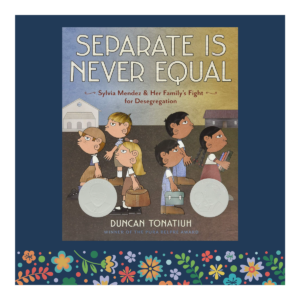 7. Separate Is Never Equal: Sylvia Mendez and Her Family’s Fight for Desegregation by Duncan Tonatiuh
7. Separate Is Never Equal: Sylvia Mendez and Her Family’s Fight for Desegregation by Duncan Tonatiuh
This is the only non-fiction book in this list and it shares the story of Sylvia Mendez and her family’s battle to end school segregation in California, years before Brown v. Board of Education. It’s an inspiring true story that introduces students to an important but often overlooked piece of civil rights history, highlighting the role of Hispanic Americans in the fight for equality.
Duncan Tonatiuh is a Mexican American author and illustrator whose work is heavily influenced by Indigenous and pre-Columbian art styles. He often explores Latino history, social justice, and identity in his books, combining his heritage and artistic style to teach children about underrepresented stories in U.S. history, including Separate Is Never Equal.
What can I do?: Use this book to discuss the history of segregation and civil rights in the United States including the triumphs and contributions of the Hispanic community. Students can research other key figures in the fight for desegregation and present their findings to the class.
We hope you will find that these books help you and your students celebrate Hispanic heritage but also offer opportunities to foster empathy, cultural awareness, and a sense of shared humanity in your classroom. You can continue to honor the contributions of all people by bringing Youth Empowered Stewardship to your school. Youth Empowered Stewardship (YES) is an innovative and experiential learning process. YES activates and sustains authentic partnerships between adults and students, resulting in compelling, sustainable, and vibrant communities. Facilitators foster multi-generational collaboration through music, movement, and visual arts to address complex educational challenges. Drive continuous improvement with this asset-based, solution-oriented process.


